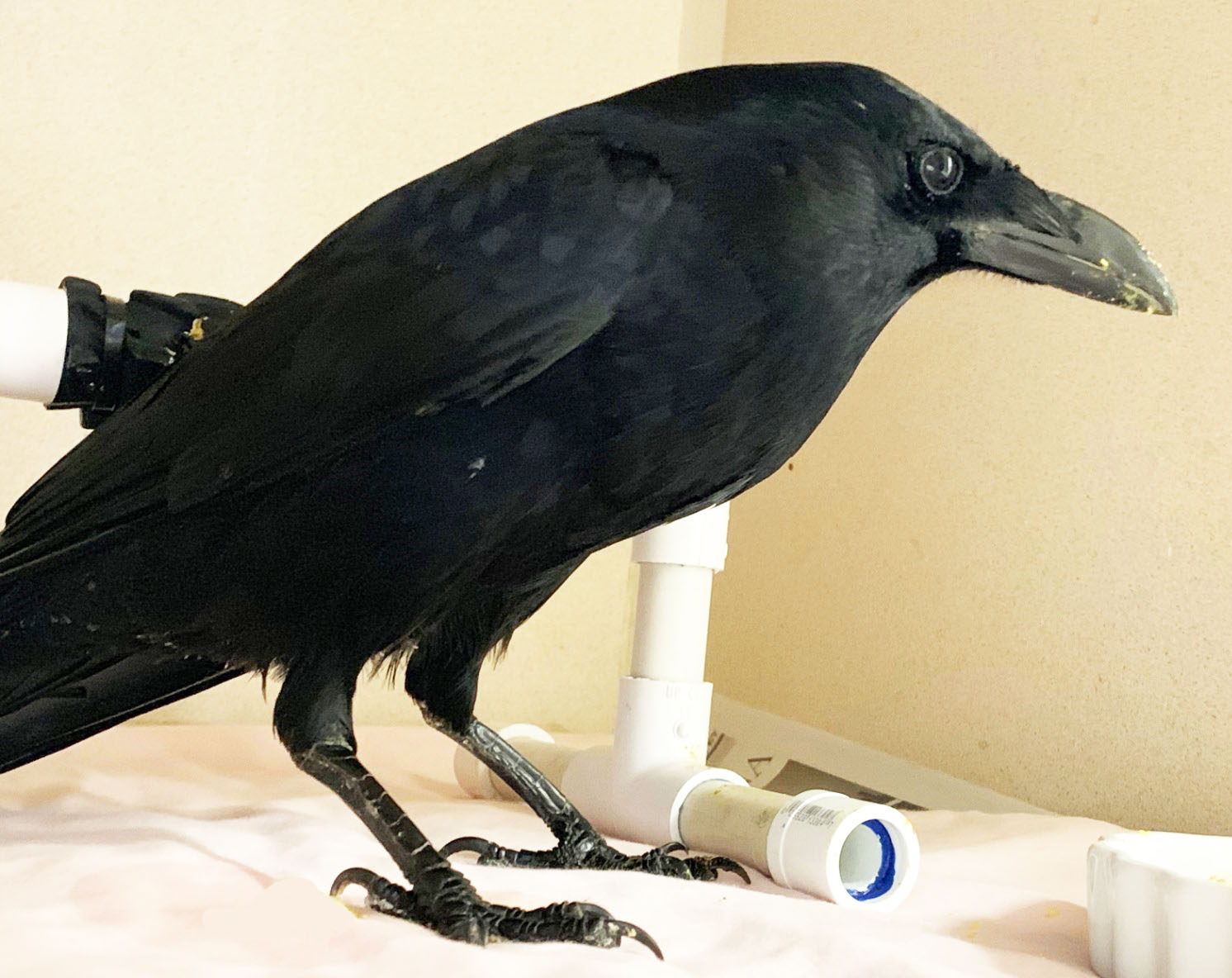Clever Crows
By Cori Carlson, Administrative Assistant

American Crow, Photo by Johanna Molina
Crows may not be the most popular of our native wildlife. But the black bird made famous in folklore and song lyrics is one of the most intelligent and an amazing problem-solver.
California Wildlife Center admits up to 175 species of birds each year, including American Crows. While CWC takes in adult Crows throughout the year, we start seeing babies in our Orphan Care Unit (OCU) in early May. Babies come to CWC when something happens to their parents, or they are injured. Last year, the OCU cared for 66 baby Crows.
While Crows are in care at CWC, we provide them with enrichment activities to keep them active and help them develop skills they’ll use back in the wild. While the younger Crows are inside a building, the staff put flowers in their cages and hang colorful, shiny materials with bells to encourage them to explore. When they are self-feeding and ready to move to larger outdoor enclosures, the staff have used dog-training toys with levers, slide doors, and slots for the Crows to open and find treats. CWC staff and volunteers also make homemade enrichment boxes, which they fill with shredded paper and hide treats for the Crows to find.
American Crows live across North America. While they prefer open spaces such as farmland and grasslands with trees nearby, they also live in suburban areas. Most types of Crows live in groups, called murders – a name that may not help with their popularity.
Crows are part of the Corvid family, which also includes Ravens and Jays. Since Crows and Ravens look similar, people sometimes confuse the two. Ravens are larger, have bigger beaks with a curve at the tip, their tails are wedge-shaped, and their wings come to a point. Meanwhile, a Crow’s tail feathers are the same length and look more like a fan when the bird’s in flight.
Typically, young Crows will be ready to leave the nest at four weeks of age, but they will continue to rely on their parents to feed them until they are about two months old. Crows are omnivores, which means they eat both plants and animals. Their diet in the wild includes grains, seeds, nuts, berries, fruit, insects, worms, and mice. Crows will also eat fish, eggs, and nestlings of other bird species.
When Crows come to CWC as orphans, they start with the corvid nestling diet, which is a blended mash of high-quality ground puppy food, hard-boiled eggs, bananas, baby food, vitamins, and minerals. As they get older, they transition to a Crow diet, which consists of bite-size pieces of high-quality dog food, hard-boiled eggs, fruits, vegetables, meat protein, vitamins, and minerals.
To give the Crows the best chance of making a successful transition back into the wild, CWC starts releasing them in groups of 9-15 birds beginning in August. This is the end of baby season when the Crows in the wild are less territorial. They start to join together in larger groups for the winter, known as communal roosting.
